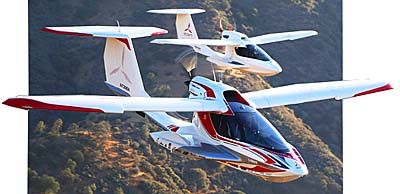
On a conference call with aviation media, Icon Aircraft sought to mitigate blowback from the 40-page contract announced just before Sun ‘n Fun 2016. Plenty of people took them to task and several position holders reported dissatisfaction with some of the more burdensome aspects of the lengthy legal document. “We [messed] that up,” CEO Kirk Hawkins told me at Aero 2016, adding that they would take action on it quickly. Since his comment in late April, the purchase agreement, meant to protect the company’s brand, intellectual property, and legal liability, was heavily revised. Cut from 40 to 11 pages, the new agreement removes a 30-year life limit on the airframe. Neither will Icon install cockpit audio and video recorders. Numerous other changes should encourage position holders to sign the dotted line. Several aviation news outlets have faulted the company for continuing to take orders while production appeared stalled, for issuing a contract no one could love except lawyers, and for tightly controlling the journalist flight experience.


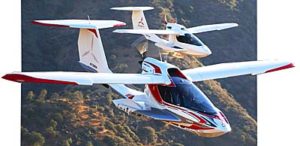
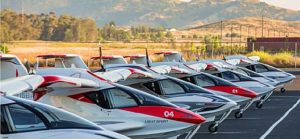
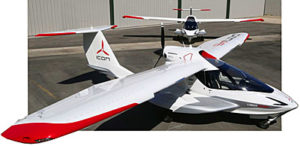
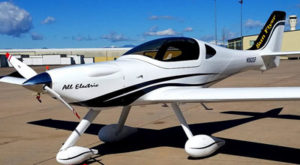
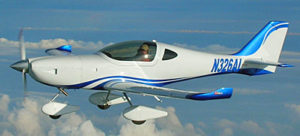
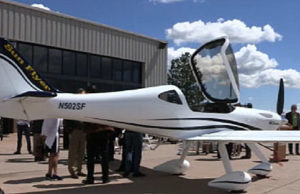
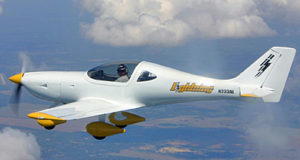
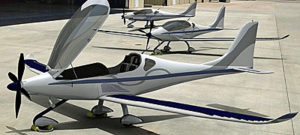
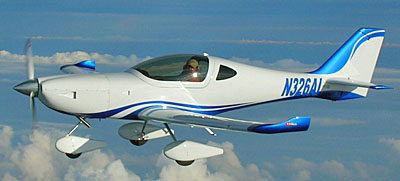
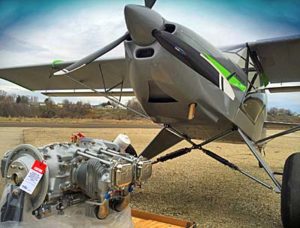
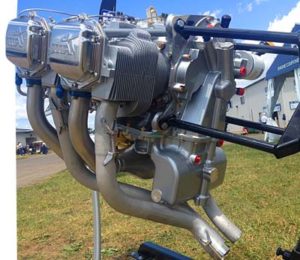
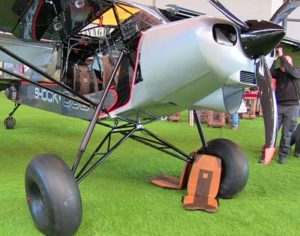
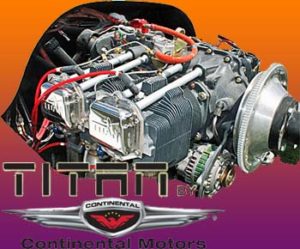
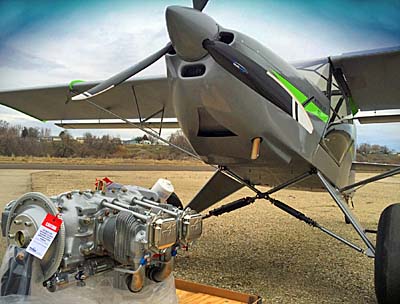
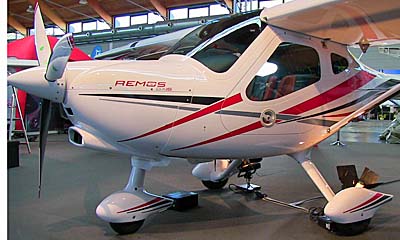
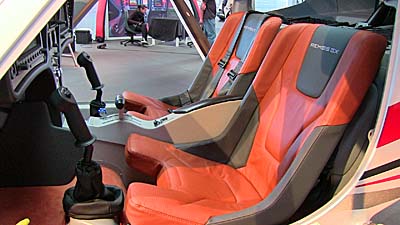
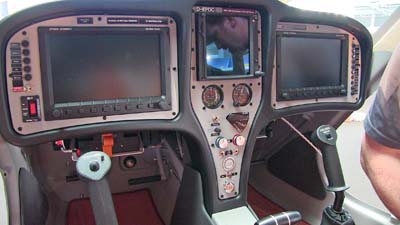
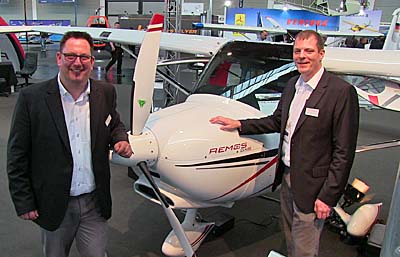

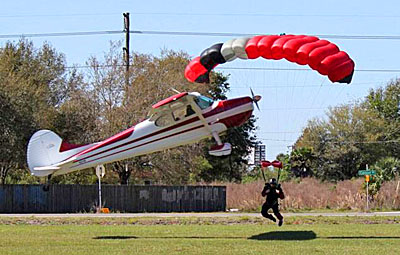
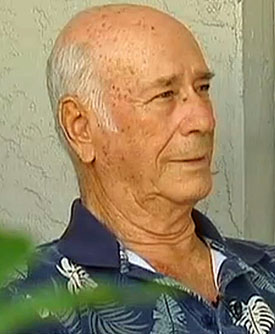
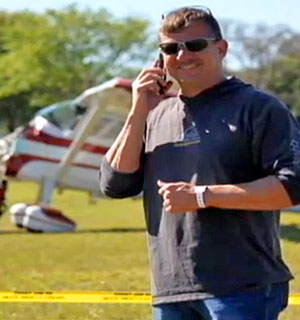

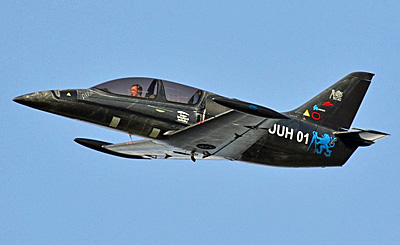 At my home airport (Spruce Creek Fly-in), I regularly see one or another full-size L-39 in various stages of being prepared for a new American owner. I was told that about 200 of these ex-Czech military jets are operating in the U.S. They are handsome, sleek, and fast-like-a-jet. Contrarily, the UL-39 is not as fast but neither should its cost of upkeep be anything close to a military jet.
We're getting a bit ahead of ourselves. The UL-39 on display was a wonderful proof-of-concept aircraft that managed to engage nearly a generation of students in aeronautical engineering disciplines at the
At my home airport (Spruce Creek Fly-in), I regularly see one or another full-size L-39 in various stages of being prepared for a new American owner. I was told that about 200 of these ex-Czech military jets are operating in the U.S. They are handsome, sleek, and fast-like-a-jet. Contrarily, the UL-39 is not as fast but neither should its cost of upkeep be anything close to a military jet.
We're getting a bit ahead of ourselves. The UL-39 on display was a wonderful proof-of-concept aircraft that managed to engage nearly a generation of students in aeronautical engineering disciplines at the 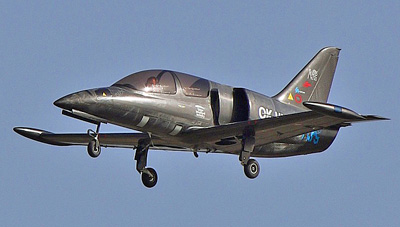 Albi UL-39 was reportedly 17 years in the making lead by Dr. Robert Theiner, whom I met alongside his creation. He and a team of students over these years created this unusual entry. While closely resembling an L-39, this edition is more affordable (projected around $225,000) — and operable — by recreational pilots when powered with a conventional gasoline reciprocating engine versus a turbine. Such engines alone can cost more than an entire Light-Sport Aircraft.
UL-39 uses a high-revving
Albi UL-39 was reportedly 17 years in the making lead by Dr. Robert Theiner, whom I met alongside his creation. He and a team of students over these years created this unusual entry. While closely resembling an L-39, this edition is more affordable (projected around $225,000) — and operable — by recreational pilots when powered with a conventional gasoline reciprocating engine versus a turbine. Such engines alone can cost more than an entire Light-Sport Aircraft.
UL-39 uses a high-revving 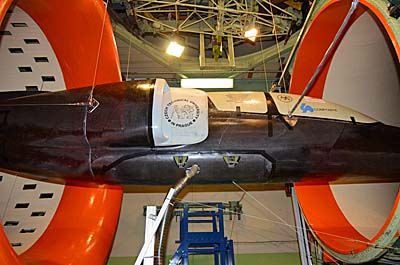 Thoroughly designed and tested Albi UL-39 could qualify as a Light-Sport Aircraft. Only minor adjustments would be needed. Fixing the gear in the down position — as required in the U.S. — would surely lower the current listed cruise of 124 knots. Weight can actually go up, perhaps allowing a more deluxe interior. Despite its larger look, UL-39 can make European Ultralight weight, said developers, meaning 472.5 kilograms (1,041.6 pound), which figure includes an airframe parachute that is mandatory in Germany). An LSA Albi UL-39 seems easily possible.
Created in a collaborative university setting with various partners involved, the bare fuselage and air inlet qualities of the design were tested in a wind tunnel (photo). As an engineering project, this was undoubtedly a fascinating project for groups of students and their faculty advisers.
Thoroughly designed and tested Albi UL-39 could qualify as a Light-Sport Aircraft. Only minor adjustments would be needed. Fixing the gear in the down position — as required in the U.S. — would surely lower the current listed cruise of 124 knots. Weight can actually go up, perhaps allowing a more deluxe interior. Despite its larger look, UL-39 can make European Ultralight weight, said developers, meaning 472.5 kilograms (1,041.6 pound), which figure includes an airframe parachute that is mandatory in Germany). An LSA Albi UL-39 seems easily possible.
Created in a collaborative university setting with various partners involved, the bare fuselage and air inlet qualities of the design were tested in a wind tunnel (photo). As an engineering project, this was undoubtedly a fascinating project for groups of students and their faculty advisers.
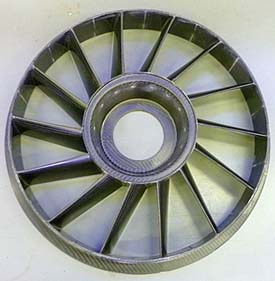 The carbon-fiber composite construction was done by
The carbon-fiber composite construction was done by 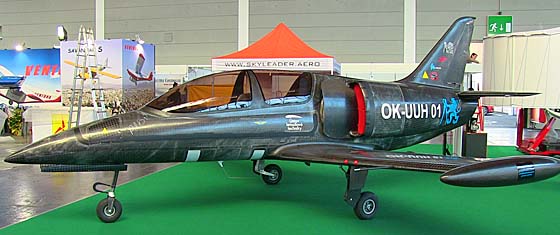 Skyleader, the marketing name for Jihlavan Airplanes, said that during construction, care was taken to assure compliance with CS-VLA, a certification system for Very Light Aircraft in the European Union that is recognized by FAA.
While UL-39 will not ready for market for a couple more years, one day those Walter Mitty jet jockey wannabes enthralled by the slippery lines of Albi. could have one of their own.
Join me at Aero 2016 for a live-during-the-show look at Albi UL-39...
Skyleader, the marketing name for Jihlavan Airplanes, said that during construction, care was taken to assure compliance with CS-VLA, a certification system for Very Light Aircraft in the European Union that is recognized by FAA.
While UL-39 will not ready for market for a couple more years, one day those Walter Mitty jet jockey wannabes enthralled by the slippery lines of Albi. could have one of their own.
Join me at Aero 2016 for a live-during-the-show look at Albi UL-39...

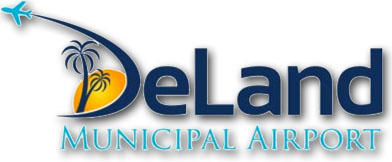
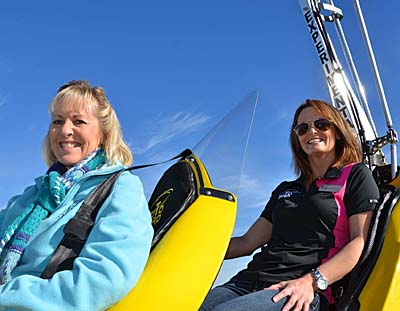


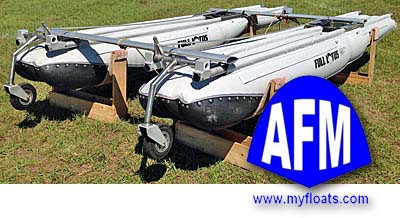 They may not be as sleek and speedy looking as fiberglass floats and lack the familiarity of metal versions but Full Lotus floats have long been revered for their super tough exterior finish and their high functionality. As they were primarily a straight float system and prior to Lotus Floats being acquired by AFM, adapting the floats to amphibious operation took ingenuity from the owner or builder. As Aircraft Float Manufacturing puts it, "Full-Lotus's already versatile aircraft floats for water, snow and ice just jumped to the next level. The newest models are now also equipped for paved runways, gravel, dirt and grass."
They may not be as sleek and speedy looking as fiberglass floats and lack the familiarity of metal versions but Full Lotus floats have long been revered for their super tough exterior finish and their high functionality. As they were primarily a straight float system and prior to Lotus Floats being acquired by AFM, adapting the floats to amphibious operation took ingenuity from the owner or builder. As Aircraft Float Manufacturing puts it, "Full-Lotus's already versatile aircraft floats for water, snow and ice just jumped to the next level. The newest models are now also equipped for paved runways, gravel, dirt and grass." 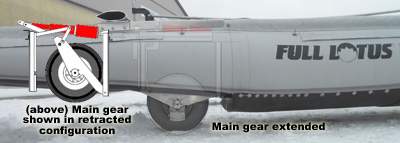 Debuted at Sun 'n Fun in April AFM's news floats were introduced for LSA-type aircraft. "The tough plastic shells resist rocks and other hazards better than any other aircraft float system available," said the company. Full Lotus' flat bottom design allows operations in just a few inches of water and AFM said the large wheels easily handle soft fields. Inside the floats — whose construction is well characterized by comparing them to inflatable boats from Zodiac and other brands — are multiple inflated cells, each independent of the others. "The pressurized air of the multiple 'bladders' (air-bags) offers unparalleled shock-absorbing capabilities," said AFM. Over the years these floats have commonly been used by ultralight aircraft and have long proven their toughness. The original developing company earned its stripes by making bladders for installation in fire bombers.
Debuted at Sun 'n Fun in April AFM's news floats were introduced for LSA-type aircraft. "The tough plastic shells resist rocks and other hazards better than any other aircraft float system available," said the company. Full Lotus' flat bottom design allows operations in just a few inches of water and AFM said the large wheels easily handle soft fields. Inside the floats — whose construction is well characterized by comparing them to inflatable boats from Zodiac and other brands — are multiple inflated cells, each independent of the others. "The pressurized air of the multiple 'bladders' (air-bags) offers unparalleled shock-absorbing capabilities," said AFM. Over the years these floats have commonly been used by ultralight aircraft and have long proven their toughness. The original developing company earned its stripes by making bladders for installation in fire bombers.
 "We have optimized this new design with a unique main wheel system that retracts within the body of the inflated float," stated says Nick Heintz, speaking for the manufacturer. "This better protects the wheels, keeps landing loads centralized and greatly reduces drag while flying. It also maintains the sleek good looks of the well-known Full-Lotus floats." Sleek or not, depending on how you perceive them, the floats have seen extensive field use where floatplanes can strike submerged debris including branches and other detritus that could inflict damage to fiberglass or metal floats. AFM said the new float system is in production now and one of the first aircraft types to be equipped with it is the popular kit-built
"We have optimized this new design with a unique main wheel system that retracts within the body of the inflated float," stated says Nick Heintz, speaking for the manufacturer. "This better protects the wheels, keeps landing loads centralized and greatly reduces drag while flying. It also maintains the sleek good looks of the well-known Full-Lotus floats." Sleek or not, depending on how you perceive them, the floats have seen extensive field use where floatplanes can strike submerged debris including branches and other detritus that could inflict damage to fiberglass or metal floats. AFM said the new float system is in production now and one of the first aircraft types to be equipped with it is the popular kit-built 


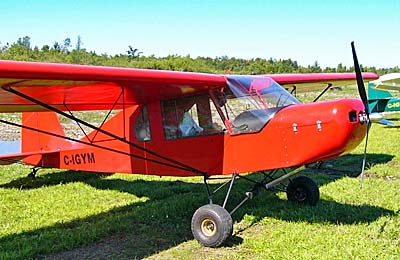

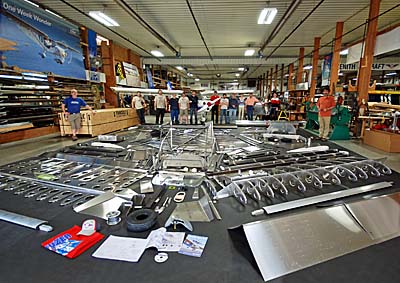
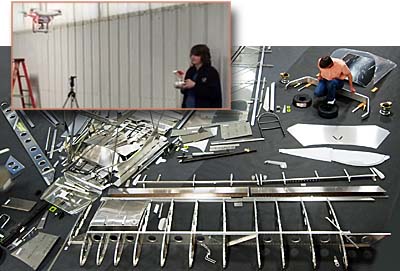

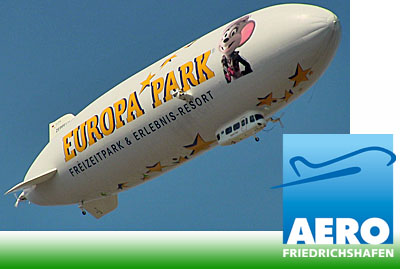 I always love traveling to
I always love traveling to 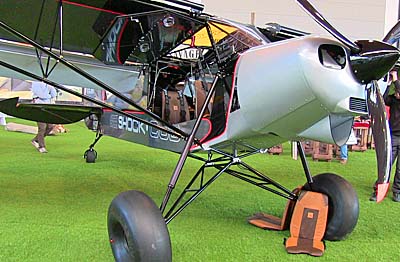 Zlin Savage Shock — Shock definitely created awe at Aero. On my final visit to their unique space with carpet that looked for all the world like grass (not that astroturf stuff that does a crude imitation), I saw visitors literally crawling under Shock, poring over its exterior details, and getting inside for a simulated experience. If you've seen Savage before — called Outback in America — you'll want to take a much closer look when it appears at Oshkosh this summer. This machine is a piece of work.
Importer Bill Canino of
Zlin Savage Shock — Shock definitely created awe at Aero. On my final visit to their unique space with carpet that looked for all the world like grass (not that astroturf stuff that does a crude imitation), I saw visitors literally crawling under Shock, poring over its exterior details, and getting inside for a simulated experience. If you've seen Savage before — called Outback in America — you'll want to take a much closer look when it appears at Oshkosh this summer. This machine is a piece of work.
Importer Bill Canino of 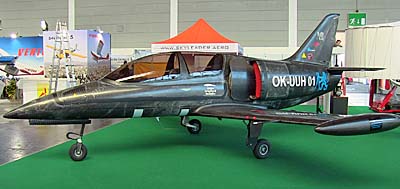 UL-39 (at SkyLeader display) — I acted like everyone else when I first saw the UL-39. Although I'd already seen photos of it flying, thanks to my EuroColleague, Jan Fridrich, I still had to marvel. This pointy nosed, fighter-looking aircraft appears in most ways to be jet powered. It closely emulates the popular L-39 Czech military jet (200 of which are reportedly flying in America), so of course, it had to look jet-like.
UL-39 is presently powered by a BMW motorcycle engine driving a type of ducted fan though it uses impellers (13 of them!) with the engine running at a high revolution, more than 10,000 rpm at cruise, I was told. This aircraft uses retractable gear, naturally, as it tries to look like the fighter aircraft.
Yet UL-39 is in some ways more modern and I don't mean it has a glass cockpit. Indeed by the use of all carbon fiber (an L-39 is metal), this dashing aircraft can actually make Europe's ultralight class meaning gross weight is confined to 472.5 kilograms or a bit less than 1,042 pounds. Amazing ...and I clearly was not the only who thought so.
Led by professor Robert Theiner, UL-39 is a university project 17 years in the making. Composite parts were made by one of the partners with assembly of the pieces by LSA manufacturer,
UL-39 (at SkyLeader display) — I acted like everyone else when I first saw the UL-39. Although I'd already seen photos of it flying, thanks to my EuroColleague, Jan Fridrich, I still had to marvel. This pointy nosed, fighter-looking aircraft appears in most ways to be jet powered. It closely emulates the popular L-39 Czech military jet (200 of which are reportedly flying in America), so of course, it had to look jet-like.
UL-39 is presently powered by a BMW motorcycle engine driving a type of ducted fan though it uses impellers (13 of them!) with the engine running at a high revolution, more than 10,000 rpm at cruise, I was told. This aircraft uses retractable gear, naturally, as it tries to look like the fighter aircraft.
Yet UL-39 is in some ways more modern and I don't mean it has a glass cockpit. Indeed by the use of all carbon fiber (an L-39 is metal), this dashing aircraft can actually make Europe's ultralight class meaning gross weight is confined to 472.5 kilograms or a bit less than 1,042 pounds. Amazing ...and I clearly was not the only who thought so.
Led by professor Robert Theiner, UL-39 is a university project 17 years in the making. Composite parts were made by one of the partners with assembly of the pieces by LSA manufacturer, 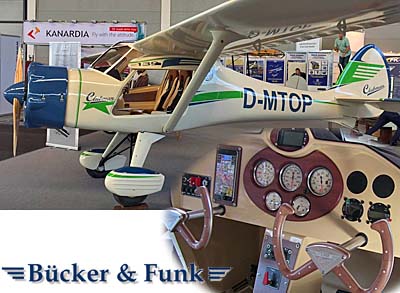
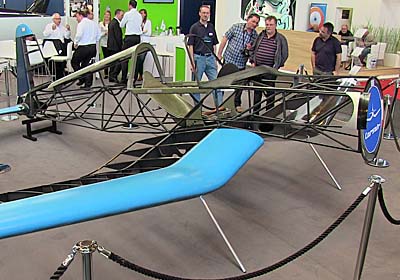

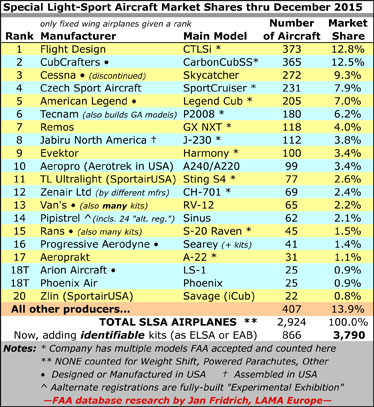
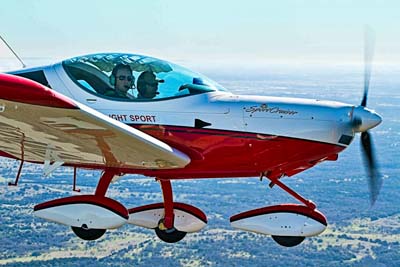
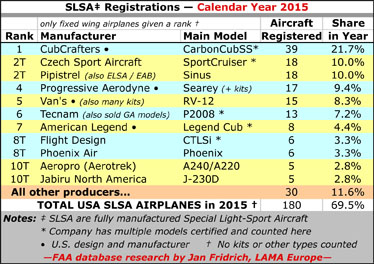
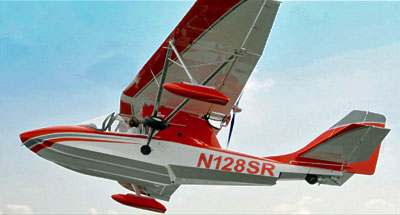

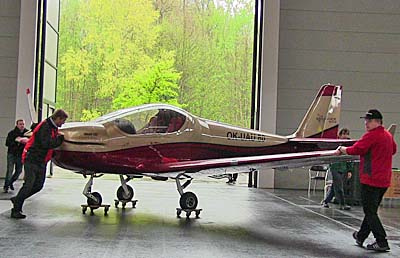
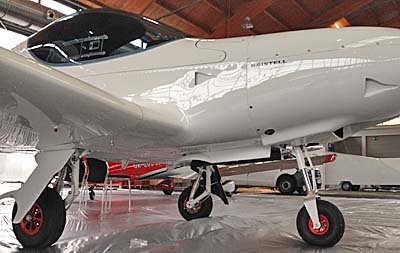
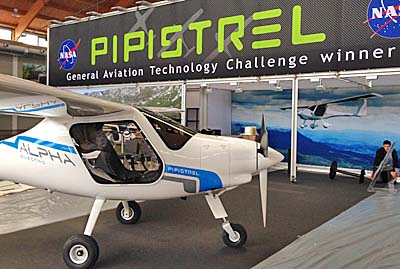
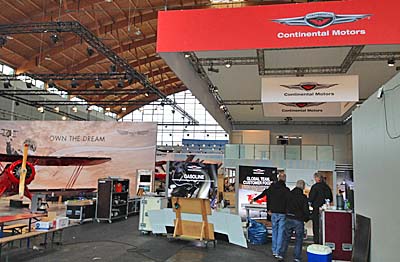
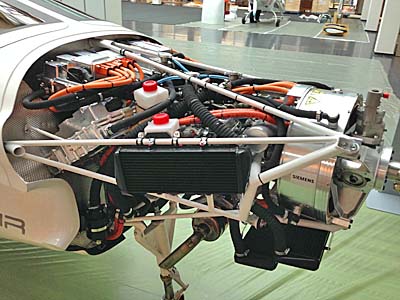
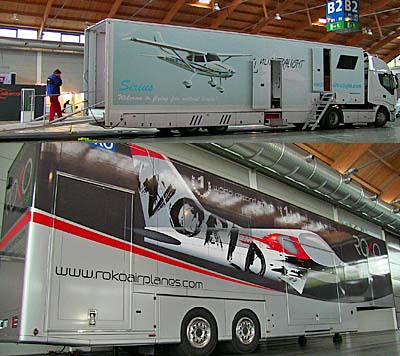

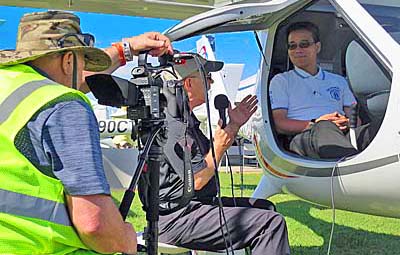
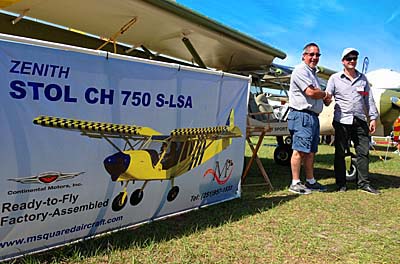
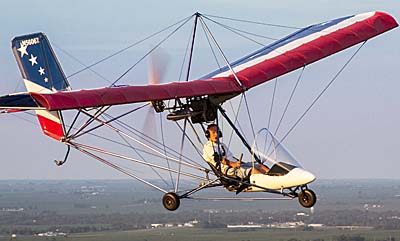
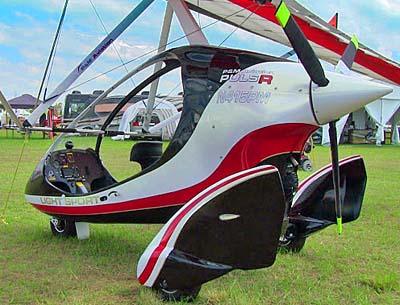
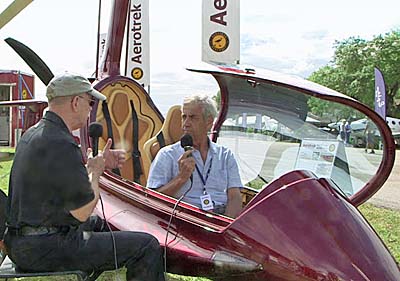
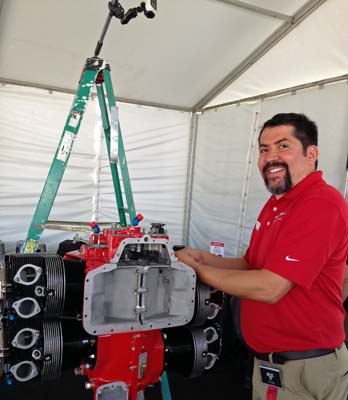
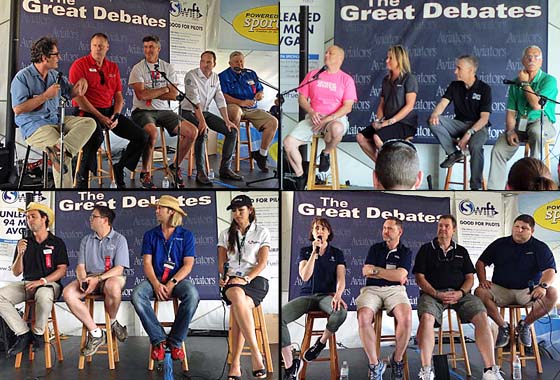

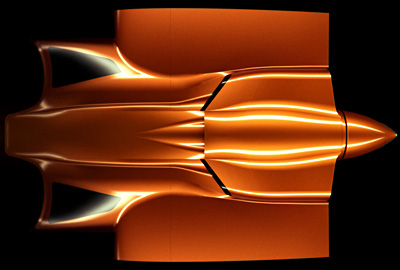
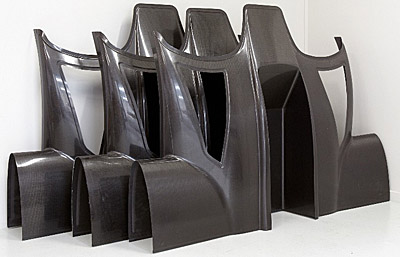
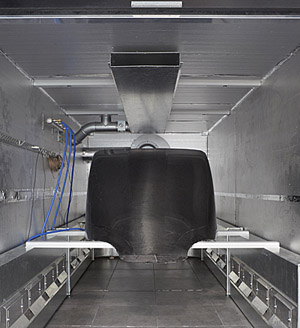
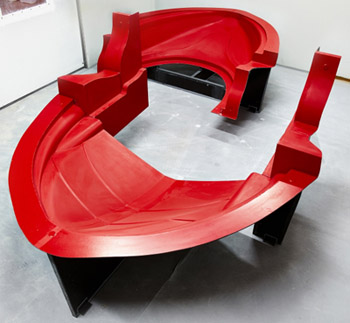

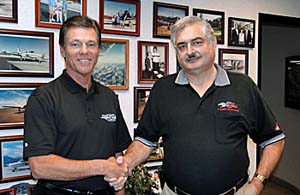
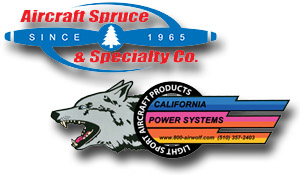


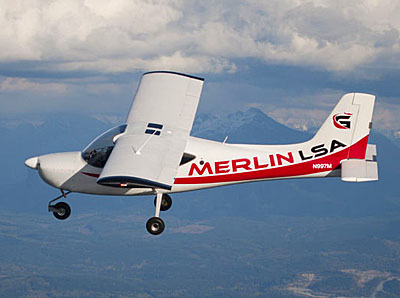
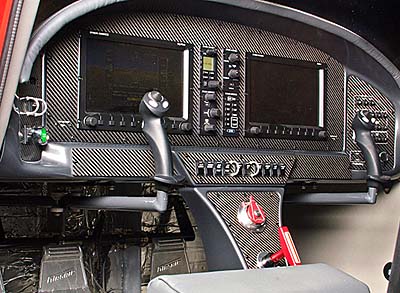
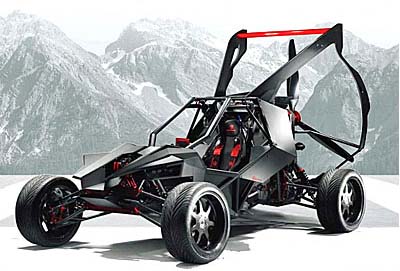

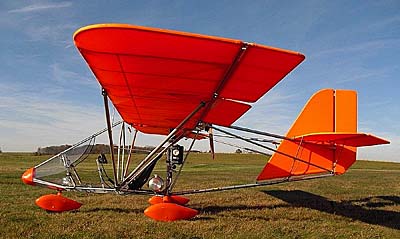
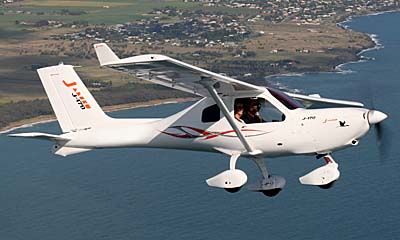


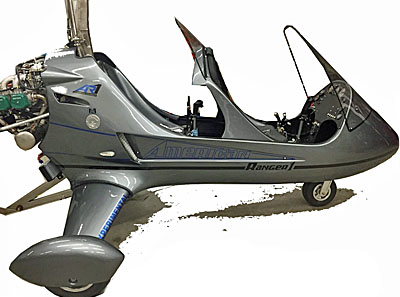

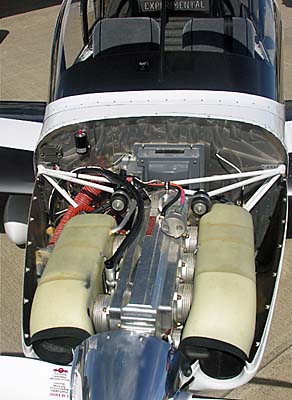 Among all the engines that lift Light-Sport Aircraft and light kit aircraft into the air, a few names dominate the field. To be used in a Special LSA, the engine has to meet all the requirements of the ASTM consensus standards. That is tough enough that currently we have
Among all the engines that lift Light-Sport Aircraft and light kit aircraft into the air, a few names dominate the field. To be used in a Special LSA, the engine has to meet all the requirements of the ASTM consensus standards. That is tough enough that currently we have 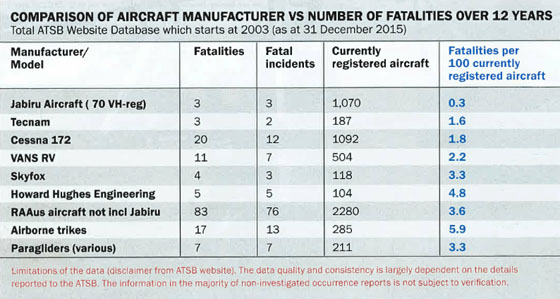 As the nearby chart taken from the magazine supplied by
As the nearby chart taken from the magazine supplied by 
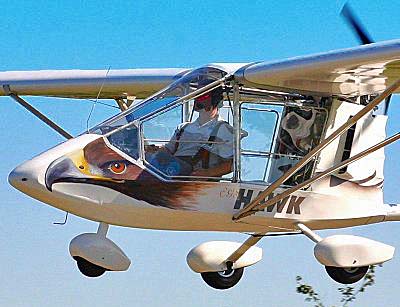 In the beginning ... the light aviation world was void and without form. Those were the earliest days of light powered aircraft that people could truly afford. I refer way back to the late 1970s following a period when hang gliders were the darlings of the affordable aviation world. Hang gliders evolved in various dimensions, among which was the addition of an engine to a previously unpowered type of flying machine.
In those formative years one man stood large. Not only a big man in physical form, he was big in stature and bold in his goals. Some readers already know to whom I refer — the always impressive and irrepressible Chuck Slusarczyk. History about him goes back far enough that much of it precedes the World Wide Web. The earliest articles about Chuck and his enterprise never made it into the digital universe but see
In the beginning ... the light aviation world was void and without form. Those were the earliest days of light powered aircraft that people could truly afford. I refer way back to the late 1970s following a period when hang gliders were the darlings of the affordable aviation world. Hang gliders evolved in various dimensions, among which was the addition of an engine to a previously unpowered type of flying machine.
In those formative years one man stood large. Not only a big man in physical form, he was big in stature and bold in his goals. Some readers already know to whom I refer — the always impressive and irrepressible Chuck Slusarczyk. History about him goes back far enough that much of it precedes the World Wide Web. The earliest articles about Chuck and his enterprise never made it into the digital universe but see 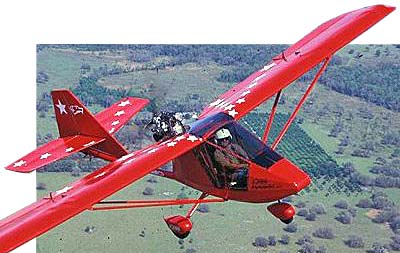 Chuck is now enjoying his retirement, having sold off his company after producing around 2,000 Hawks in various forms: Part 103 ultralights, experimental single seaters, two seater tandems, Hawks on floats, and a Light-Sport version. The history of the Hawk is so rich and varied that it would take a full article to describe it all. Fortunately, website members can read much of the history
Chuck is now enjoying his retirement, having sold off his company after producing around 2,000 Hawks in various forms: Part 103 ultralights, experimental single seaters, two seater tandems, Hawks on floats, and a Light-Sport version. The history of the Hawk is so rich and varied that it would take a full article to describe it all. Fortunately, website members can read much of the history 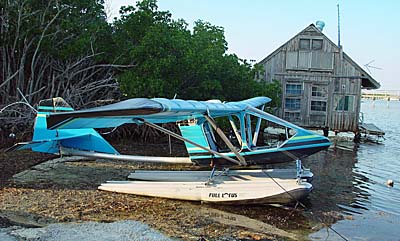 Terry got his start in aviation like many youngsters, building radio-controlled airplanes back in the 1970s. After spending eight years in the U.S. Navy, Terry obtained his Private Pilot certificate in 1994. However, he said, "I preferred to fly ultralights and Light-Sport Aircraft."
"I started building scale model aircraft and competing in realistic flight and realistic scale competition in 1980s," Terry explained. His RC building efforts including a half-scale J3 Piper Cub and he reported that he won first place awards "due to detail and quality of realism" in his assemblies.
"I purchased my first full-scale ultralight in 1995 at Sun 'n Fun, an Airbike from Team Aircraft," Terry recalled. "This was the start of building a variety of light planes: an Aerosport II, a Capella, a Rans, and a Kolb." He said he enjoys restoration projects, a favorite of which "has always been Piper J3 Cub." Terry reports restoring six Cubs in the past 15 years. "I like to fly them, but I really enjoy the project part of it the most."
Terry got his start in aviation like many youngsters, building radio-controlled airplanes back in the 1970s. After spending eight years in the U.S. Navy, Terry obtained his Private Pilot certificate in 1994. However, he said, "I preferred to fly ultralights and Light-Sport Aircraft."
"I started building scale model aircraft and competing in realistic flight and realistic scale competition in 1980s," Terry explained. His RC building efforts including a half-scale J3 Piper Cub and he reported that he won first place awards "due to detail and quality of realism" in his assemblies.
"I purchased my first full-scale ultralight in 1995 at Sun 'n Fun, an Airbike from Team Aircraft," Terry recalled. "This was the start of building a variety of light planes: an Aerosport II, a Capella, a Rans, and a Kolb." He said he enjoys restoration projects, a favorite of which "has always been Piper J3 Cub." Terry reports restoring six Cubs in the past 15 years. "I like to fly them, but I really enjoy the project part of it the most."
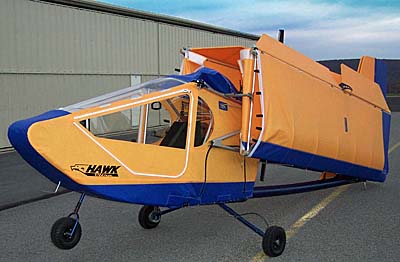 "My love for the projects led me to establish my own restoration and services business this year," Terry said, "and I will be retiring from Polk County School Board soon to focus on new business with my son, Chris."
"We will be offering support on all Hawk aircraft and will build and sell Hawk Ultra and two-place Hawk Arrow kits, as well as the two-seat Special LSA Hawk II." Given the population of hundreds of Hawks in the light aircraft fleet this is bound to be welcome news to those needing parts and service.
Over the years Chuck Slusarczyk operated the business, I believe I flew every model the pioneer created. Chuck and I were contemporaries in the early days of hang gliding and I came to know the man very well. Along with many other light aviation enthusiasts, I always looked forward to more of Chuck's highly entertaining sense of humor.
I cannot imagine Terry Short or son Chris can continue that particular part of the Hawk tradition but in a period when plenty of pilots lament the high cost of very sophisticated Light-Sport Aircraft, the CGS Hawks offer a more modest expense. These are simple airplanes but they've proven themselves over many years.
I also know several builders of kit Hawks and the project demands a lower number of hours. Flying any of the Hawk models is quite straightforward. The handling is docile and flight characteristics are predictable.
If you are headed to Sun 'n Fun in a couple weeks, you can find out more about CGS Hawk aircraft at the booth of Terry Short Aviation Services, space LP-007A in Paradise City. He reported he will not have an aircraft — "We've just received all the components and tooling and didn't want to just throw something together to show" — but he will be available to answer questions.
"My love for the projects led me to establish my own restoration and services business this year," Terry said, "and I will be retiring from Polk County School Board soon to focus on new business with my son, Chris."
"We will be offering support on all Hawk aircraft and will build and sell Hawk Ultra and two-place Hawk Arrow kits, as well as the two-seat Special LSA Hawk II." Given the population of hundreds of Hawks in the light aircraft fleet this is bound to be welcome news to those needing parts and service.
Over the years Chuck Slusarczyk operated the business, I believe I flew every model the pioneer created. Chuck and I were contemporaries in the early days of hang gliding and I came to know the man very well. Along with many other light aviation enthusiasts, I always looked forward to more of Chuck's highly entertaining sense of humor.
I cannot imagine Terry Short or son Chris can continue that particular part of the Hawk tradition but in a period when plenty of pilots lament the high cost of very sophisticated Light-Sport Aircraft, the CGS Hawks offer a more modest expense. These are simple airplanes but they've proven themselves over many years.
I also know several builders of kit Hawks and the project demands a lower number of hours. Flying any of the Hawk models is quite straightforward. The handling is docile and flight characteristics are predictable.
If you are headed to Sun 'n Fun in a couple weeks, you can find out more about CGS Hawk aircraft at the booth of Terry Short Aviation Services, space LP-007A in Paradise City. He reported he will not have an aircraft — "We've just received all the components and tooling and didn't want to just throw something together to show" — but he will be available to answer questions.